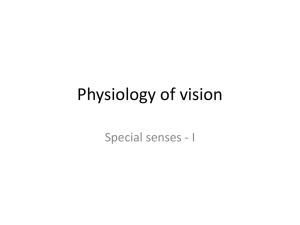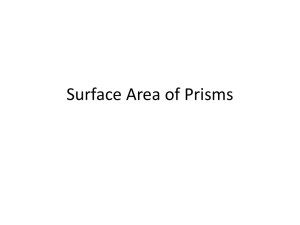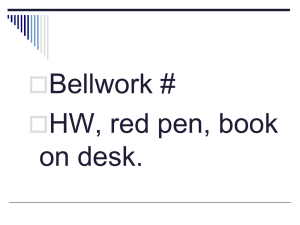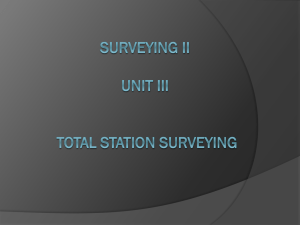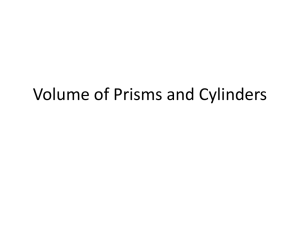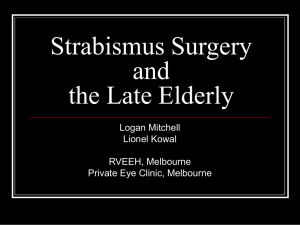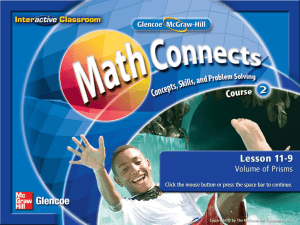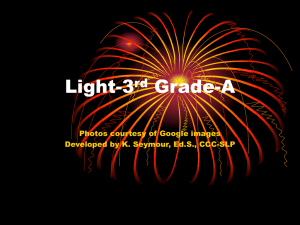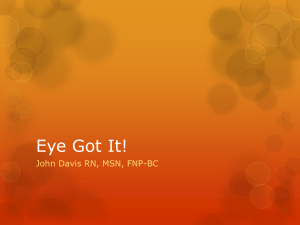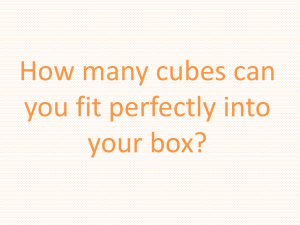Others Head Tilt Test
advertisement
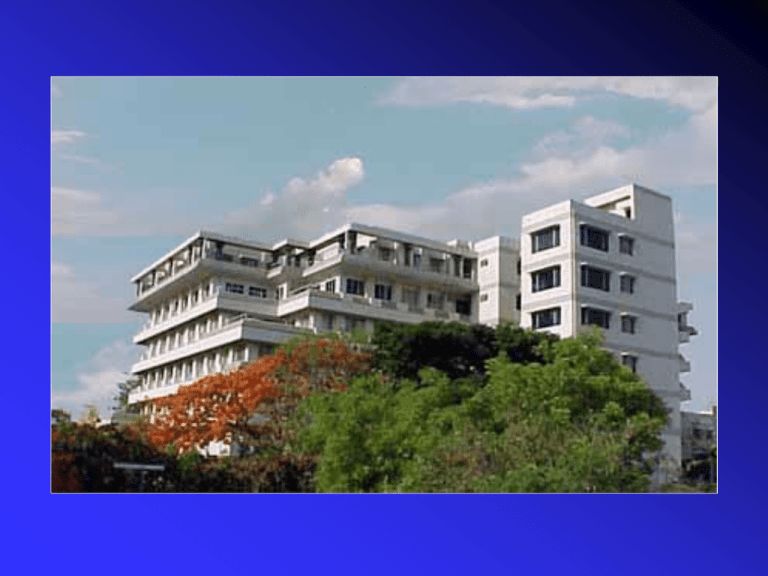
Squint
Clinic
L. V. Prasad Eye Institute
Hyderabad
Formal Orthoptic Diagnostic Aid:
1
2
3
management is traditional rather than rational
Orthoptic Report
Getting an orthoptic report
is like kissing your own sister
It doesn’t lead anywhere
Practical
Approach
To
Strabismus
Definition of Strabismus
• When the two visual
axes do not intersect
at the object of
attention
Aim of Examination
• To determine the normality or
abnormality of :
• The sensory apparatus
• The motor apparatus
• In a valid & repeatable manner
Information Required From Exam
• Bifoveal Fusion
• Nature and degree of Deviation
• Fusional Vergences
• Measurements
• If Tropia – characteristics of Suppression
scotoma
Factors to Be Controlled
• Accommodation
• Fixation
• Fusional vergences
All Tests
• Cycloplegic
retinoscopy
• Refractive errors
corrected
• Accommodative
target for distance
and near
Sequence of Clinical Tests
•
•
•
•
•
Bi foveal fusion
Fusional vergences
Deviations & Measurements
Rotations, A/V, Head tilt
Limitation of movements
• Restriction VS weakness
• Characteristics of suppression
Doctor Must Do the Examination
Personally
Cover Test
Exotropia
Esotropia
Alternate Divergent Squint
Un - Cover Test
Un - Cover Test
Exophoria – Fusional Reflex
Exophoria – Fusion Movement
Intermittent Divergent Squint
Intermittent Divergent Squint
Prism Bar Cover Test
Ocular Movements
every limitation of movement must
be checked uniocularly
Patterns : Rising Eye
Patterns : Falling Eye
Testing For A-V Pattern
No A or V
V Pattern
A Pattern
Recording Results
10 ET
-3
R/L +30
-3
10 RXT
+4
40 XT
+4
L/R +30
Recording Results
10 ET
-3
R/L =30
{-3}
10 RXT
+4
+4
40 XT
L/R +30
Globe Retraction
Exotropia with Hypertropia
R.E. Fixing
R.E. Fixing
Suspect Strabismus
• If abnormal head posture
• If closing one eye
Head Tilt Test
Head Tilt Test : Others
Head Tilt Test : Others
Head Tilt Test : Others
Head Tilt Test : Others
Sixth Nerve Paralysis & Saccades
Floating Saccades
Primary Versus Secondary
Deviation
Forced Duction Test
Forced Duction Test
Force Generation Test
Force Generation Test
Sensory System / Tests
The sensory system is of inestimable
importance in the management
Valid inferences :
• Age of patient
• Type of squint
• Refraction correction H/O
• Motor examination
Sensory / Suppression - Inference
Early onset tropia
Binocular suppression scotoma
Early onset exotropia
Temporal hemiretinal suppression scotoma
Early onset esotropia
Regional nasal hemiretinal suppression
Visual Acuity
Even in a Baby It Is Possible To
• Test the quality of vision
• Refract and examination fundi
(with help of atropine)
Qualitative Vision
Don’t Forget The Fundus
4 Prism Test : Normal
Prism RE: LE moves out
And comes back to refixate
4 Prism Test : Abnormal
Prism RE: LE moves out
And stays out
After removal of prism
4 Prism Test: Abnormal
Prism LE : No movements
4 Prism Test : Positive
Sophisticated Tests
Audience Interaction
Aim of Strabismus Management
• Good vision in each eye
• Binocular vision
• Preferably stereopsis
• Normalise :
• Deviations
• Rotations
• Head position
Rx of Strabismus
•
•
•
•
•
Glasses
Occlusion
Prisms
(Exercises)
Surgery : minimum number of
interventions
Pseudo Strabismus
Glasses
Occlusion
Cosmetic Surgery
Adjustable Sutures
Superior Oblique Paralysis
Key to Strabismus
If you master the physical examination and
disregard the mystique of orthoptics then
strabismus is no longer such a difficult subject
Even I can handle it ?
If you are interested in
doing things mechanically
Fix holes in the retina / do cataracts
If you want to exercise those grey cells
Do squints
